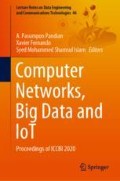Abstract
To forecast conditions of action or actions during physical activity, the issue of classifying body gestures and reactions is referred to as human activity recognition (HAR). As the main technique to determine the range of motion, speed, velocity, and magnetic field orientation during these physical exercises, inertial measurement units (IMUs) prevail. Inertial sensors on the body can be used to produce signals tracking body motion and vital signs that can develop models efficiently and identify physical activity correctly. Extreme gradient boosting, multilayer perceptron, convolutional neural network, and long short-term memory network methods are contrasted in this paper to distinguish human behaviors on the HEALTH datasets. The efficiency of machine learning models is often compared to studies that better fit the multisensory fusion analysis paradigm. The experimental findings of this article on the MHEALTH dataset are strongly promising and reliably outperform current baseline models, comprising of 12 physical activities obtained from four separate inertial sensors. The best efficiency metrics were obtained by MLP and XGBoost with accuracy (92.85%, 90.97%), precision (94.66%, 92.09%), recall (91.59%, 89.99%), and F1-score (92.7%, 90.78%), respectively.
Access this chapter
Tax calculation will be finalised at checkout
Purchases are for personal use only
References
Heart.org (2019) [Online]. Available: https://www.heart.org/-/media/files/about-us/policy-research/policy-positions/clinical-care/remote-patient-monitoring-guidance-2019.pdf
Khusainov R, Azzi D, Achumba IE, Bersch SD (2013) Real-time human ambulation, activity, and physiological monitoring: taxonomy of issues, techniques, applications, challenges and limitations. Sensors
Roobini S, Fenila Naomi J (2019) Smartphone sensor based human activity recognition using deep learning models. Int J Recent Technol Eng (IJRTE) 8(1)
Wang J, Chen Y, Hao S, Peng X, Hu L (2019) Deep learning for sensor-based activity recognition: a survey. Pattern Recog Lett 119:3–11
Slim SO, Atia A, Elfatta MM, Mostafa MSM (2019) A survey on human activity recognition based on acceleration data. Int J Adv Comput Sci Appl 10:84–98
Sousa W, Souto E, Rodrigres J, Sadarc P, Jalali R, El-Khatib K (2017) A comparative analysis of the impact of features on human activity recognition with smartphone sensors. In: Proceedings of the 23rd Brazillian symposium on multimedia and the Web, Gramado, Brazil, 17–20 Oct 2017; pp 397–404
Foerster F, Smeja M, Fahrenberg J (1999) Detection of posture and motion by accelerometry: a validation study in ambulatory monitoring. Comput Hum Behav 15(5):571–583
Bashar A (2019) Survey on evolving deep learning neural network architectures. J Artif Intell 1(2):73–82
Prabakeran S (2018) In-depth survey to perceiving the effect of kidney dialysis parameters using clustering framework. J Comput Theor Nanosci 15(6–7):2233–2237
Indumathi V (2018) Utilizing data mining classification technique to predict kidney diseases. J Comput Theor Nanosci 15(6–7):2193–2196
Jiang W, Yin Z (2015) Human activity recognition using wearable sensors by deep convolutional neural networks. In: Proceedings of the 23rd ACM international conference, pp 1307–1310
Banos O, Garcia R, Saez A (2019) UCI machine learning repository: MHEALTH Dataset Data Set, Archive.ics.uci.edu
Zhang M, Sawchuk AA (2012) Human activities dataset. Sipi.usc.edu
Shoaib M, Bosch S, Durmaz Incel O, Scholten H (2014) Fusion of smartphone motion sensors for physical activity recognition. Sensors
Hammerla NY, Halloran S, Plotz T (2016) Deep, convolutional, and recurrent models for human activity recognition using wearables. IJCAI
Kim Y, Moon T (2015) Human detection and activity classification based on micro-doppler signatures using deep convolutional neural networks
Javier Ordóñez F (2016) Deep convolutional and LSTM recurrent neural networks for multimodal wearable activity recognition. Sensors 16:115 [69]
Zhang W, Zhao X, Li Z (2019) A comprehensive study of smartphone-based indoor activity recognition via Xgboost. IEEE Access 7:80027–80042
Nguyen T, Fernandez D, Nguyen Q, Bagheri E (2017) Location-aware human activity recognition. Adv Data Min Appl 821–835
Mo L, Li F, Zhu Y, Huang A (2016) Human physical activity recognition based on computer vision with deep learning model. In: 2016 IEEE international instrumentation and measurement technology conference proceedings
Cornell Activity Datasets: CAD-60 & CAD-120 | re3data.org, Re3data.org, 2019
Catal C, Tufekci S, Pirmit E, Kocabag G (2015) On the use of ensemble of classifiers for accelerometer-based activity recognition. Appl Soft Comput
Talukdar J, Mehta B (2019) Human action recognition system using good features and multilayer perceptron network
Luo W, Li Y, Urtasun R, Zemel R (2019) Understanding the effective receptive field in deep convolutional neural networks
Schmidhuber J (2015) Deep learning in neural networks: an overview. Neural Netw 61:85–117
Mody M, Mathew M, Jagannathan S, Redfern A, Jones J, Lorenzen T (2019) CNN inference: VLSI architecture for convolution layer for 1.2 TOPS. Ieeexplore.ieee.org
Author information
Authors and Affiliations
Editor information
Editors and Affiliations
Rights and permissions
Copyright information
© 2021 The Author(s), under exclusive license to Springer Nature Singapore Pte Ltd.
About this paper
Cite this paper
Indumathi, V., Prabakeran, S. (2021). A Comparative Analysis on Sensor-Based Human Activity Recognition Using Various Deep Learning Techniques. In: Pandian, A., Fernando, X., Islam, S.M.S. (eds) Computer Networks, Big Data and IoT. Lecture Notes on Data Engineering and Communications Technologies, vol 66. Springer, Singapore. https://doi.org/10.1007/978-981-16-0965-7_70
Download citation
DOI: https://doi.org/10.1007/978-981-16-0965-7_70
Published:
Publisher Name: Springer, Singapore
Print ISBN: 978-981-16-0964-0
Online ISBN: 978-981-16-0965-7
eBook Packages: EngineeringEngineering (R0)

